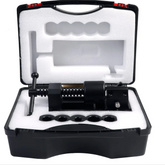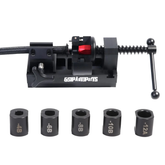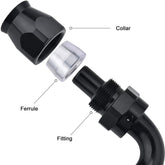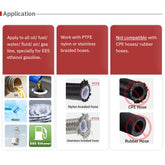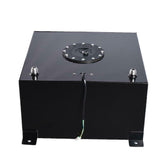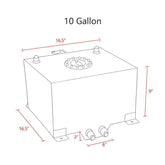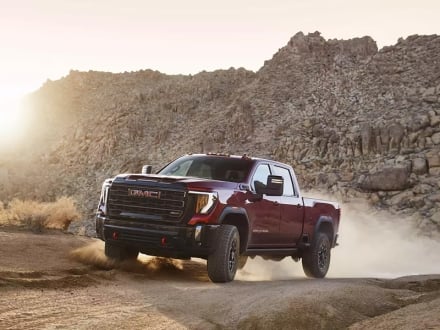Wheel spacers give your vehicle a wider stance by extending the tire across the vehicle's track. Besides making your car look cooler, wheel spacers also increase your car's grip on winding roads. But what are the pros and cons of wheel spacers?
Types of Wheel Spacers:
The companies have launched two variants of these pads. These are the hub or lug spacers depending on their location.
Hub-Centric Wheel Spacers:
They are made to offer an exact fit between the wheel's hub and the vehicle's hub. In doing so, the wheel is secured to the hub and prevented from moving or vibrating while in operation.
The hub-centric wheel spacer's purpose is to close the space between the hub and the wheel while preserving the stability and balance of the wheel. They are created from a heat-treated aluminum alloy that is very strong and light, making it the perfect material for use in high-performance cars.
Lug Centric wheel spacer:
Their installation is intended to take place in between the wheel and the lug nuts. By doing this, you can be confident that the wheel and lug nuts are installed correctly and that the hub and wheel are securely secured. They are frequently built of machined steel, which is exceptionally robust, resilient, and temperature-tolerant.
The pressure on the lug nuts and wheel is also distributed more evenly thanks to this design. On the other hand, the pressure is distributed uniformly across the wheel's surface.
Wheel spacers that are hub-centric or lug-centric are both excellent for enhancing your car's performance. While the lug-centric design offers a more uniform pressure distribution on the wheel and lug nuts, the hub-centric design aids in improving the stability and balance of the wheel. Both models will boost your vehicle's performance and are exceptionally powerful and long-lasting.
Can Wheel Spacers Stop Tire Rubbing?
Yes, a wheel spacer can be used to prevent tire rubbing. They are intended to increase the space between the tire and the parts by moving the wheel away from the brake calipers and suspension parts. If the spacers are the right size, this can help with rubbing concerns.

Pros and Cons of Wheel Spacers
While they are mostly beneficial, there are a few things to consider before installing a set of wheel spacers.
What are the benefits of wheel spacers?
- Improved Handling
Improved handling is one of the key advantages of wheel spacers for drivers that prioritize performance. The car is more stable by increasing the space between the left and right wheels. This enhances cornering, grip, and general handling.
- Allows for Wider/Larger Wheels or Tires (without Rubbing)
Wheel spacers enable owners of vehicles with a focus on the road to mount wider tires for improved handling and traction. Off-road enthusiasts frequently select larger tires that are taller than the stock tires. Larger tires could scuff against the wheel wells or fender flares without spacers.
Another justification for getting spacers is to add bigger wheels. Some wheel spacer sets have a larger pair for the rear or are available as a pair for the rear only since drivers frequently opt to mount larger rear wheels.
- Allows for Larger Brake Calipers
Wider brakes than the stock set are common on performance brakes. A wheel spacer creates space in the stock wheel area for a larger brake caliper.
- Gives Vehicle a Unique Stance/Look
Wheel spacers undoubtedly alter a vehicle's appearance, whether you like it or not. Many think it beautiful when your wheels are flush with the stock fender flares, which may be achieved with mild spacers. The wheels will protrude past the fender flares with more aggressive spacers, giving the car a unique appearance compared to stock cars.
- Simple to Install
Installing wheel spacers is quite simple. It's not much harder than putting on a new wheel. With simple equipment, you can complete it in your driveway or garage.
What are the cons of wheel spacers?
- Increased Steering Effort
There is a drawback to the enhanced handling that wheel spacers provide: increased steering effort. It requires more steering wheel input to turn the tires when the wheels are wider apart. The increased tire scrub radius, or the angle formed by the tires and the steering axis, is the cause of this. At slower speeds, the impacts will be more noticeable. With today's power steering, though, this drawback is simple to ignore.
- Decreased Ride Quality
Your car was expertly optimized by the engineers who created it at the factory. However, adding spacers throws the equilibrium off a little. The ride quality is reduced when the wheels are further away from the suspension components. The effect on comfort will be worse the greater the spacers.
- More Wear on Suspension Components
Because the wheels are further away from the vehicle, the suspension is under more pressure. With wider geometry, parts like your wheel bearings will wear out faster.
Are wheel spacers safe?
Spacers are extremely safe as long as they are fitted and maintained correctly. It's crucial to confirm that wheel spacers are permitted in your location by consulting the state and municipal rules. You might also need to buy aftermarket flares because several states forbid wheels from sticking out past the fender flares.
As was already noted, spacers could shorten the lifespan of suspension components, which could lead to issues later on. They are not intrinsically dangerous, though.

Wheel Spacer Maintenance
Wheel spacer maintenance is an easy procedure that can assist ensure years of trouble-free operation. It's critical to ensure they are securely fastened and torqued, as well as to periodically check them for any indications of wear or corrosion. By doing this, you can maximize your investment and help ensure they deliver the greatest performance possible.
Start by looking for any cracks or other degradation indicators on each spacer. Replace it right away if you find any before carrying out any more maintenance. Furthermore, ensure that every nut is tightened all the way to prevent the spacers from vibrating loose while in operation. The manufacturer's instructions ought to contain a list of the torque requirements for these components.
Lastly, as part of your regular maintenance regimen, it's a good idea to routinely brush up dirt and debris from the wheel spacers. This will lessen the chance of corrosion and other harm developing in the future. To protect their surface polish, make sure you clean them with a soft brush or cloth.
You can keep your wheel spacers in top shape for many years to come and keep your car safe and secure on the road by routinely following these instructions.
Troubleshooting Wheel Spacers
It's critical to understand what to do in the event that something goes wrong with your car and wheel spacers. For this reason, troubleshooting plays a crucial role in the wheel spacer procedure.
Let's start by discussing the uneven wear on the tires. Although there are several potential causes of uneven wear, poor alignment or faulty installation are frequently at blame. Should that be the case, you will have to take the wheel spacers off and restart. Before you drive again, make sure the wheel spacers are placed correctly and all four tires are properly aligned.
The vibration coming from your steering wheel or wheels comes next. There are several possible causes of vibration, but most often it's a problem with either the tire pressure or the lug nuts holding your wheels on. First, make sure that neither of these is damaged. If so, try replacing the wheel spacer hardware with new components to see if there is any wear or damage.
Regardless of the problem you have with your wheel spacers, you must act fast to avoid causing more harm to your car or tires. You can make sure you get the most out of your purchase and stay safe while driving by doing routine maintenance checks and being aware of any potential issues.

